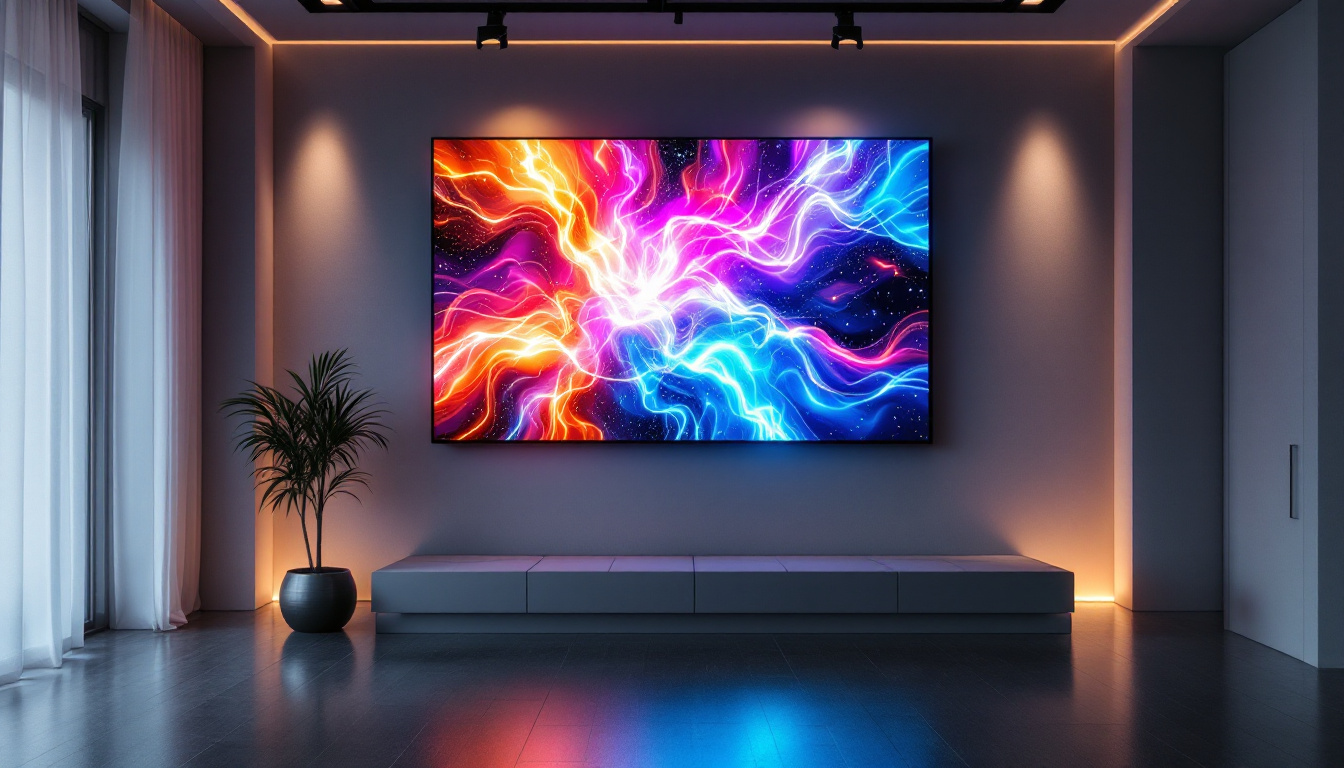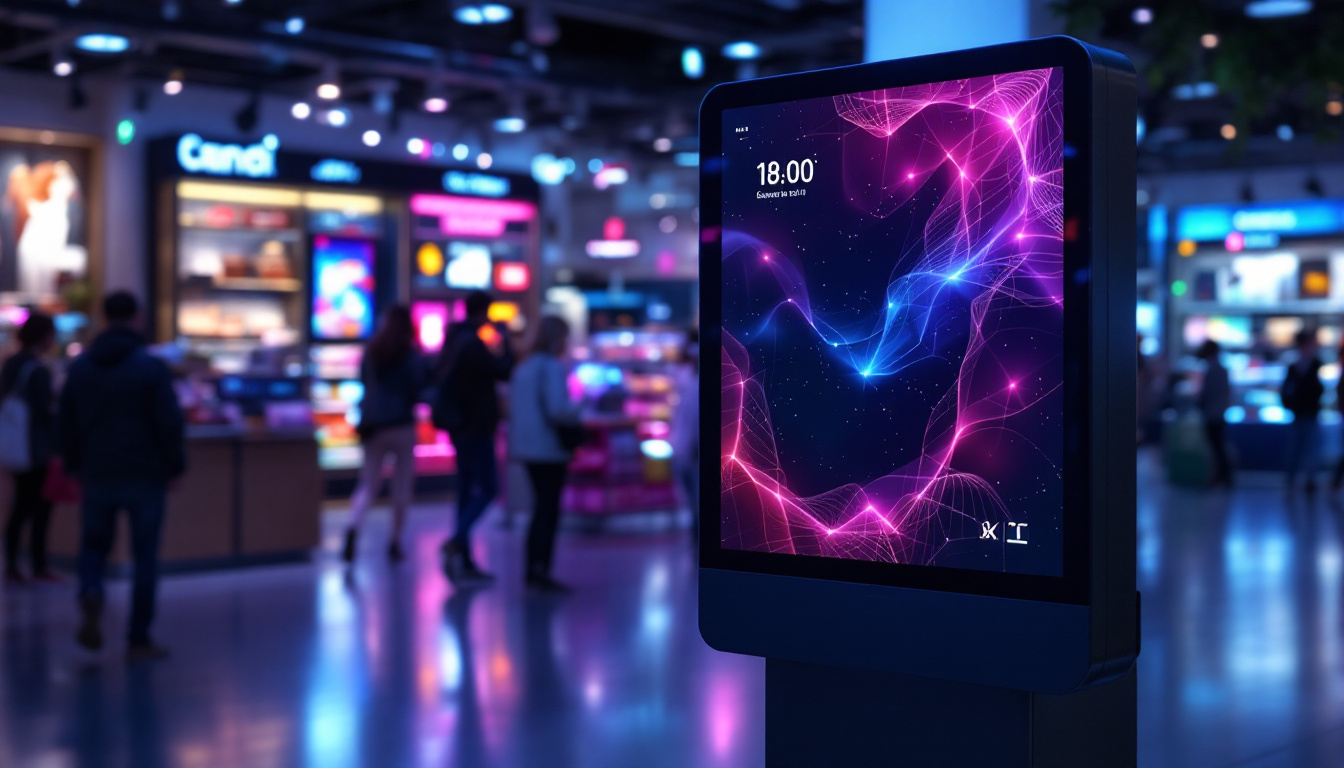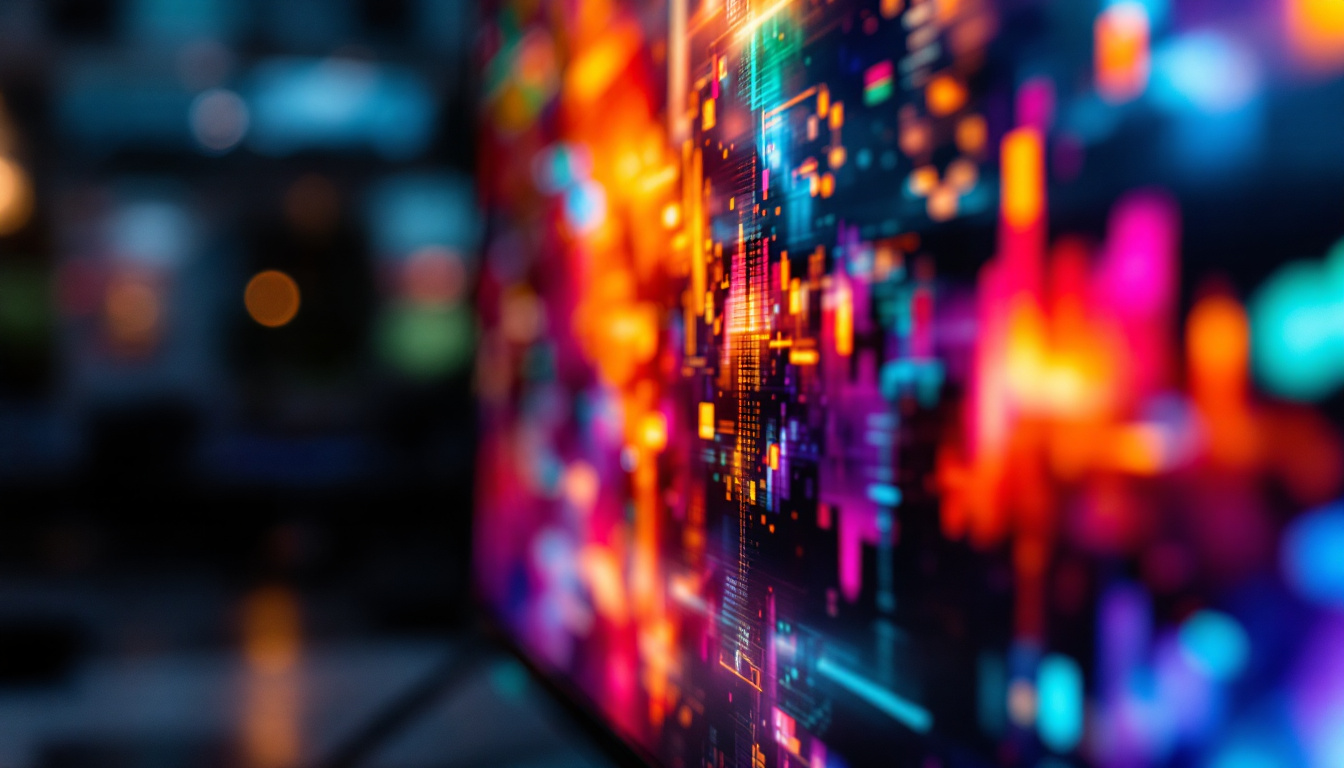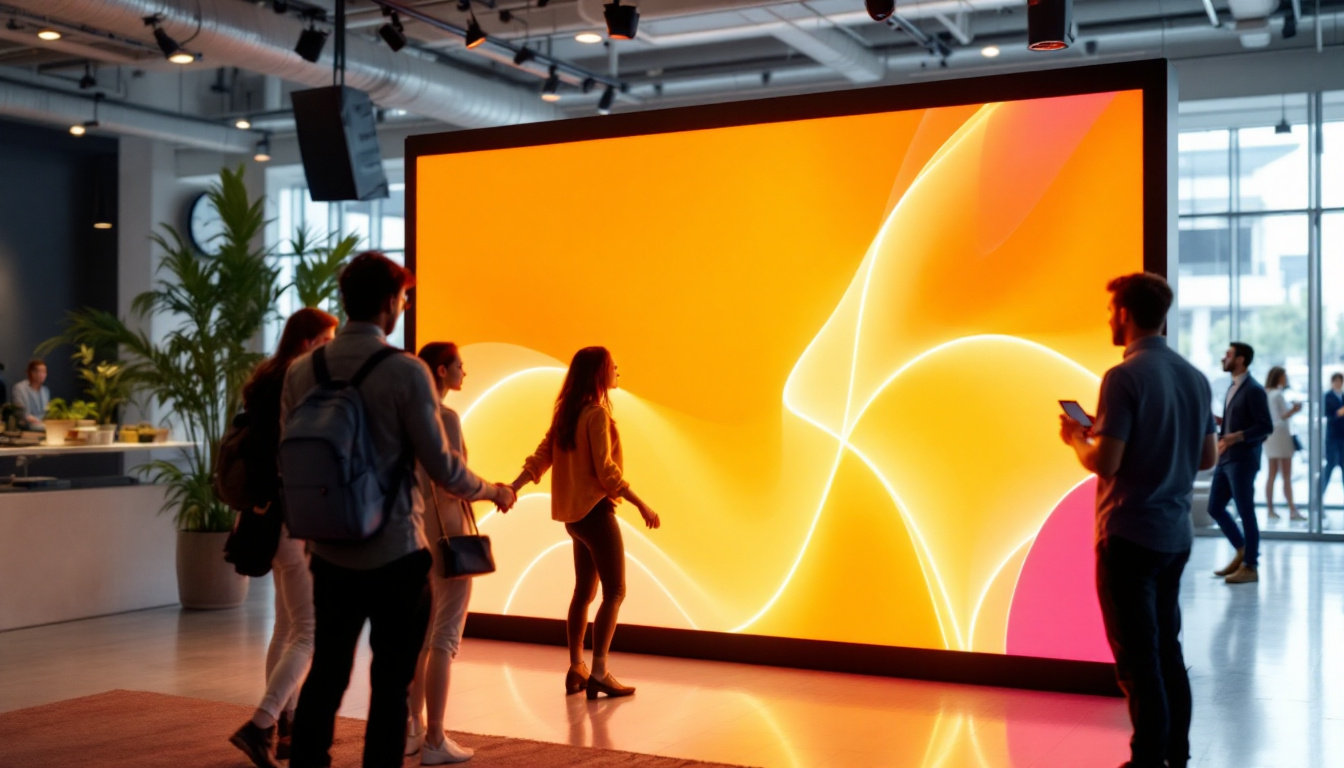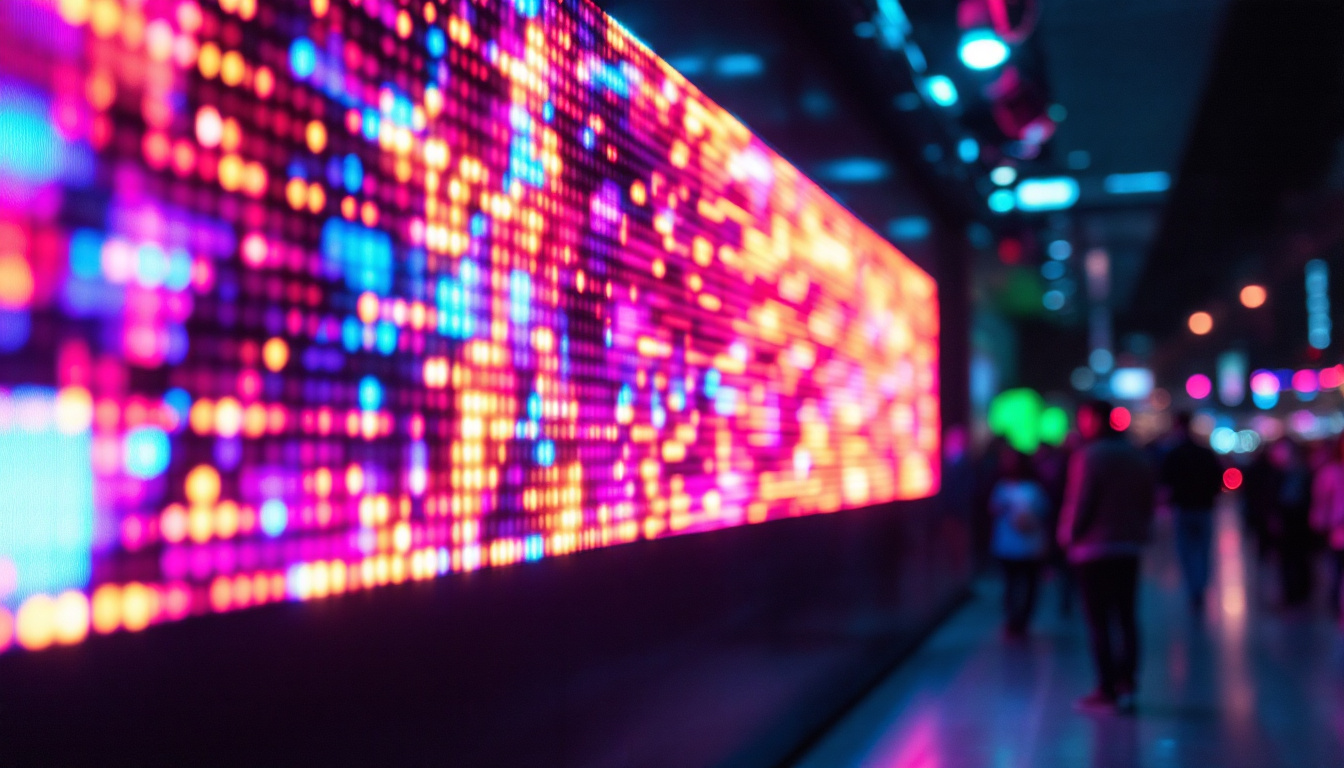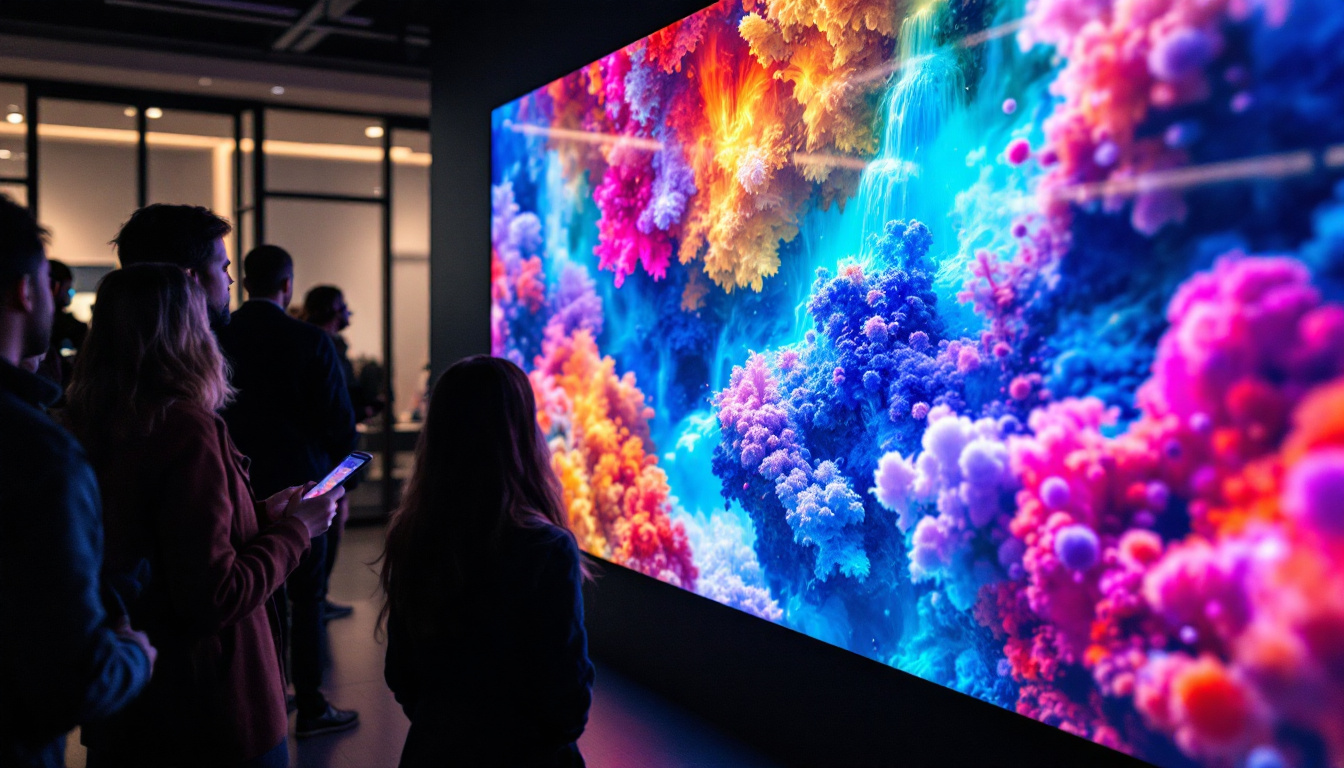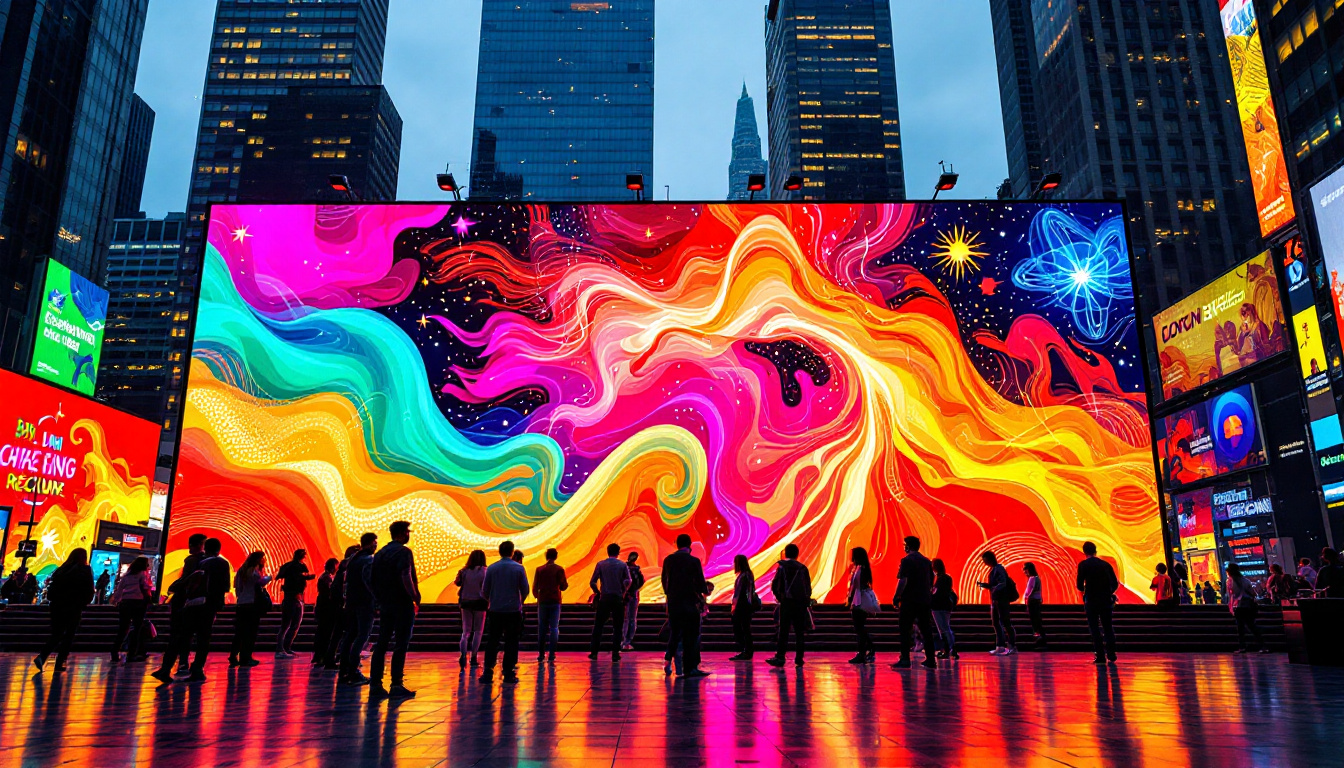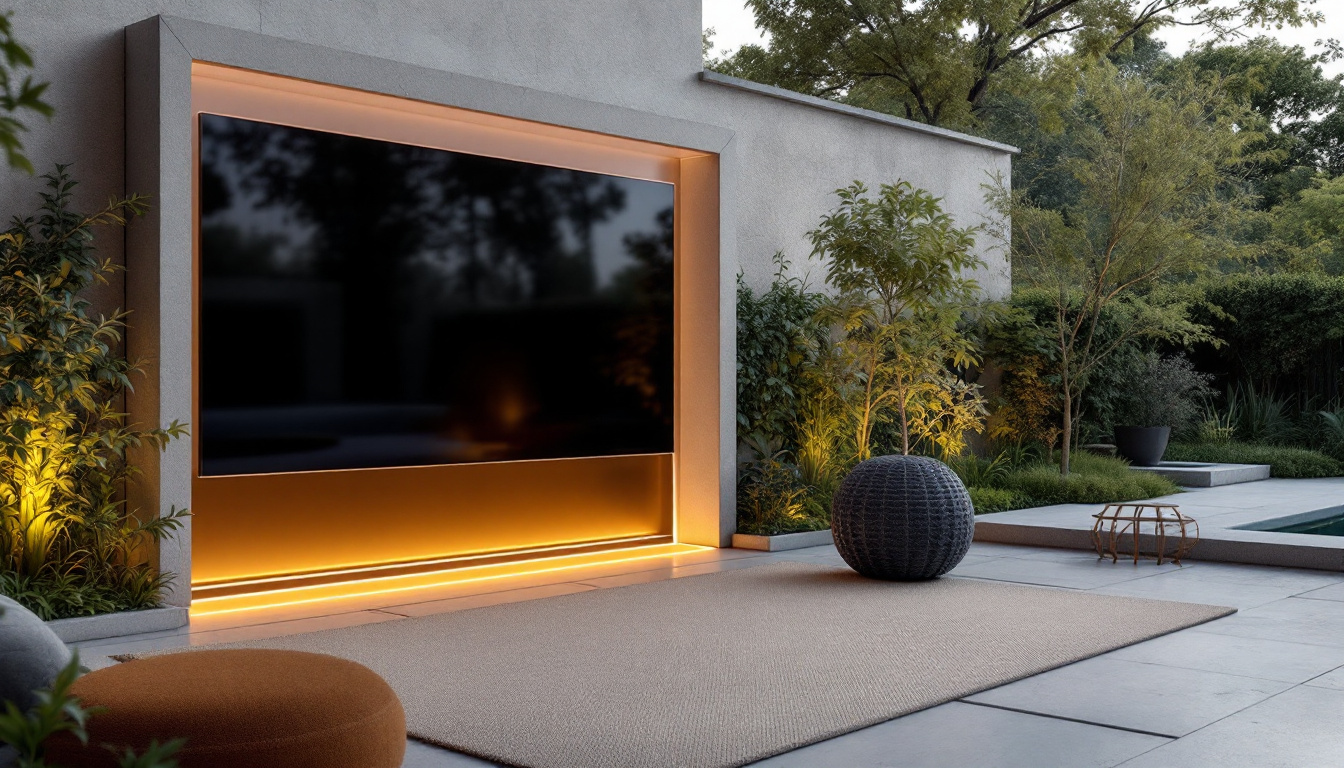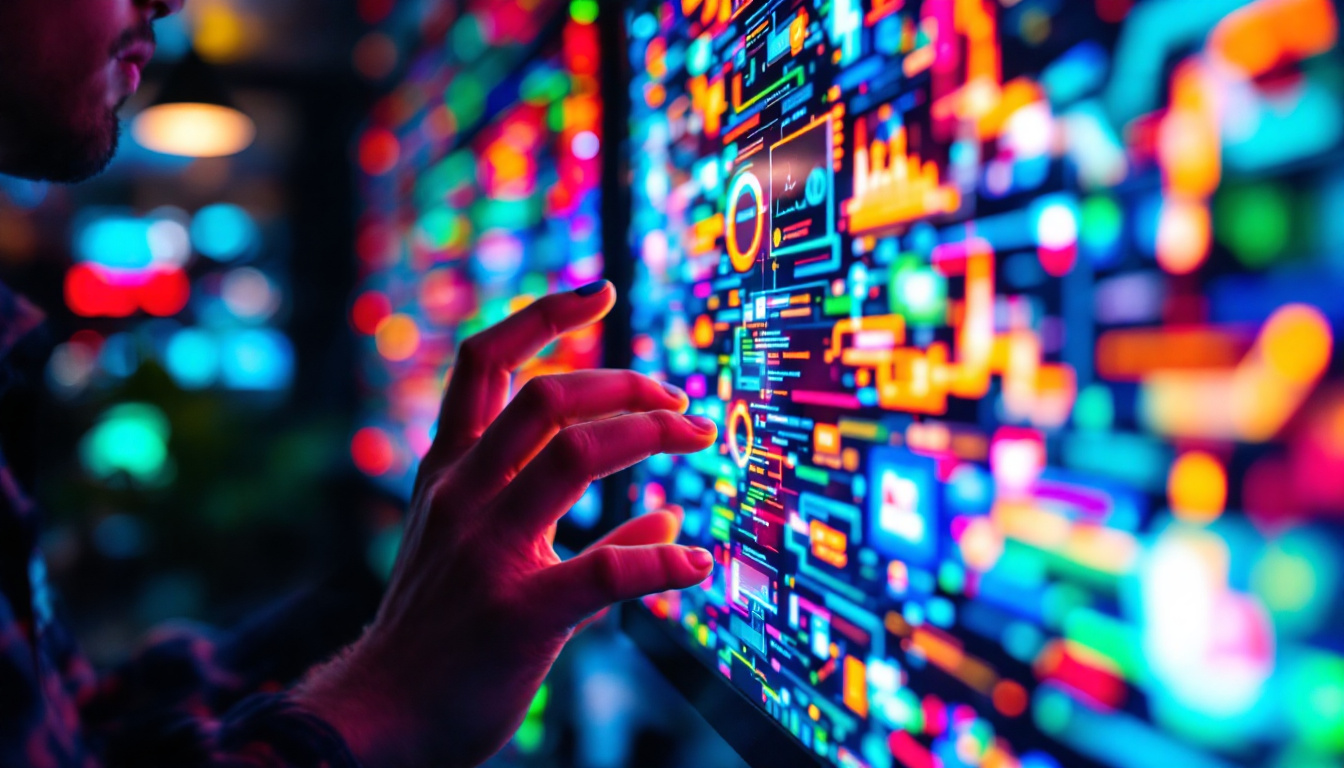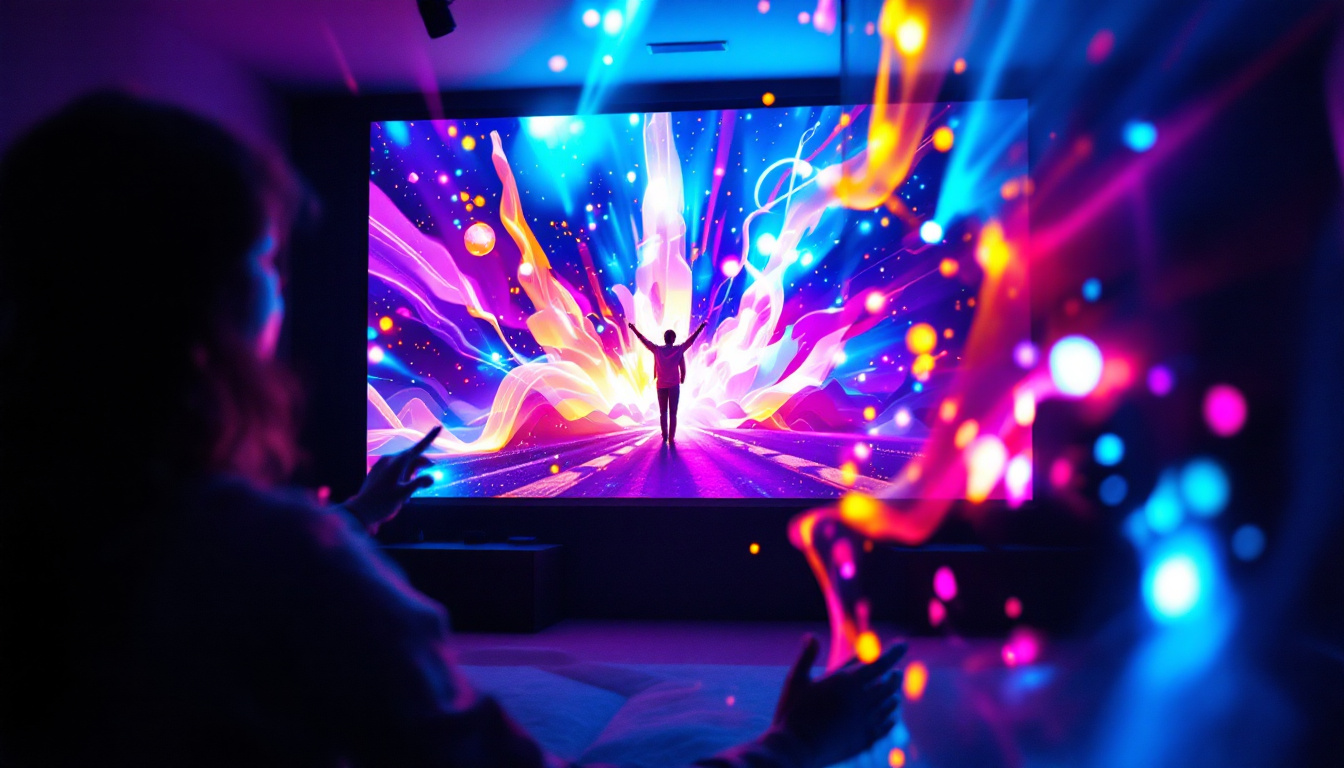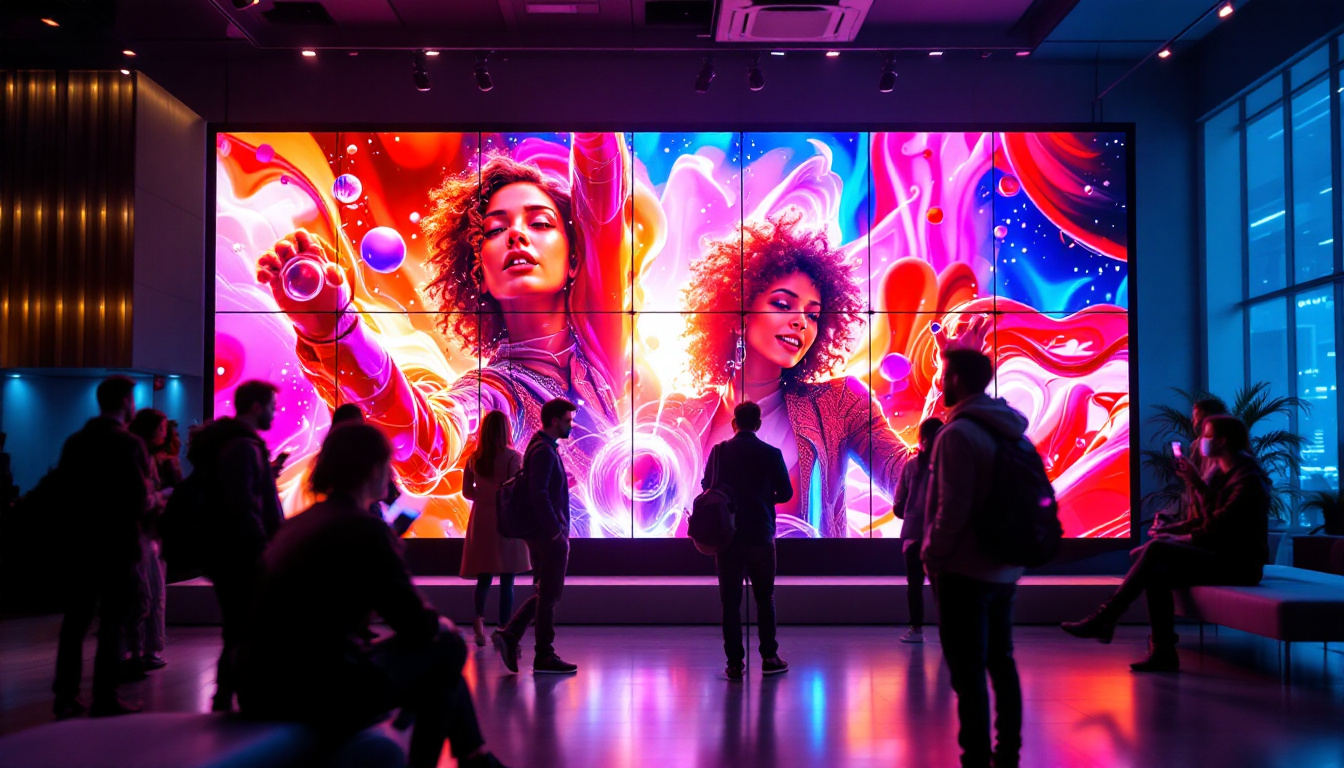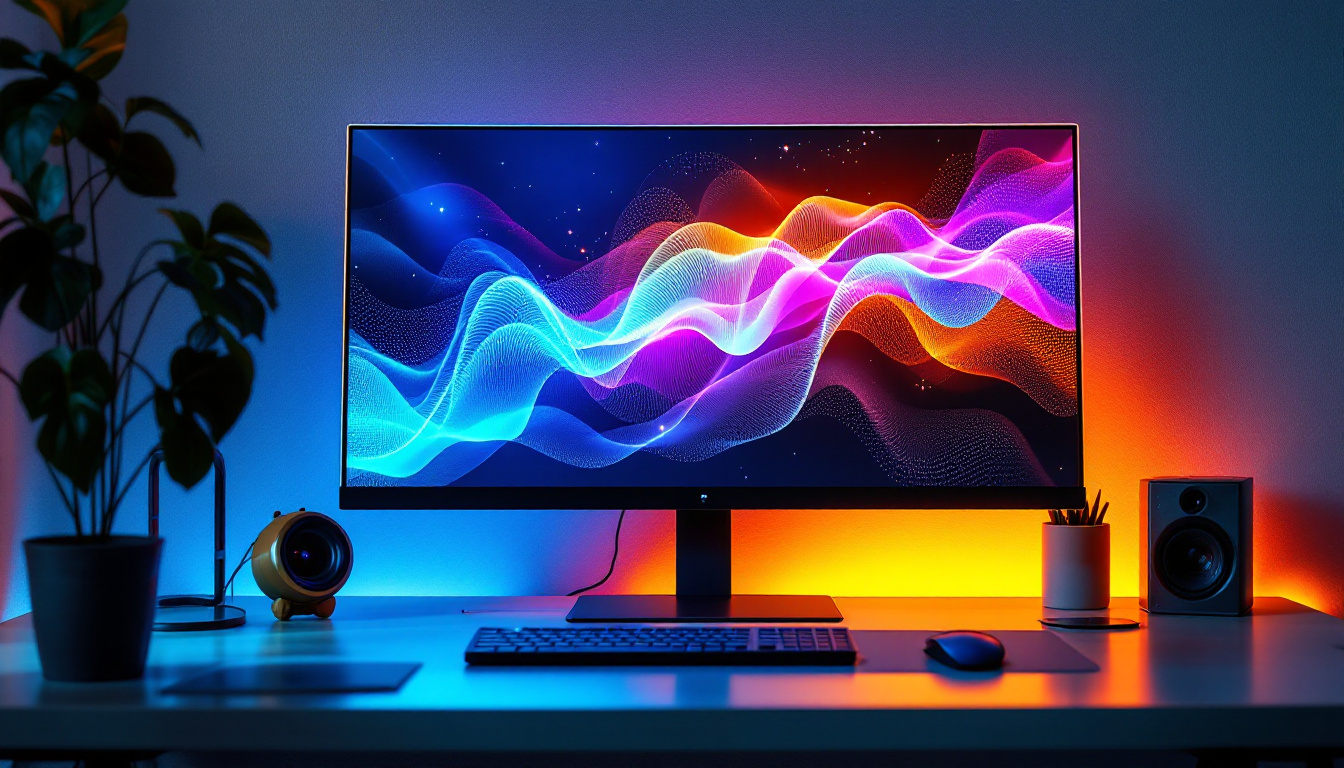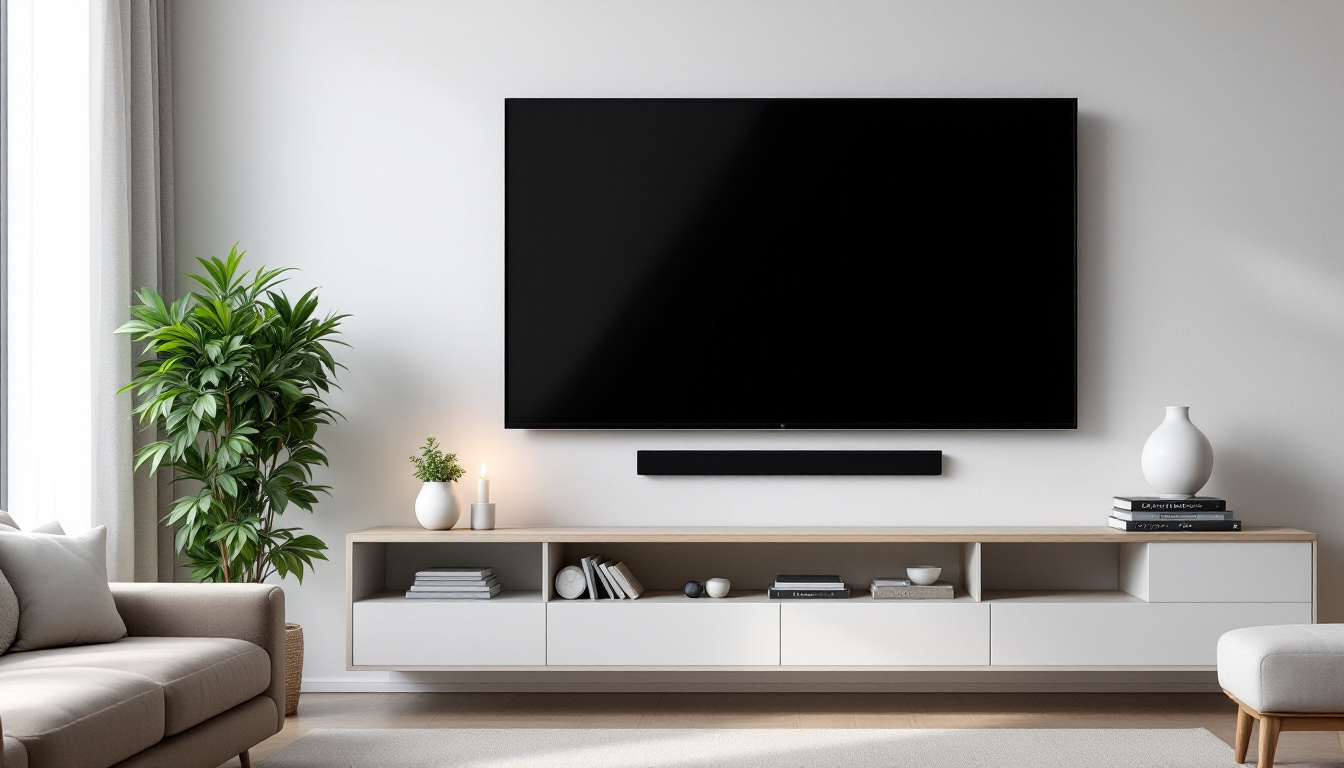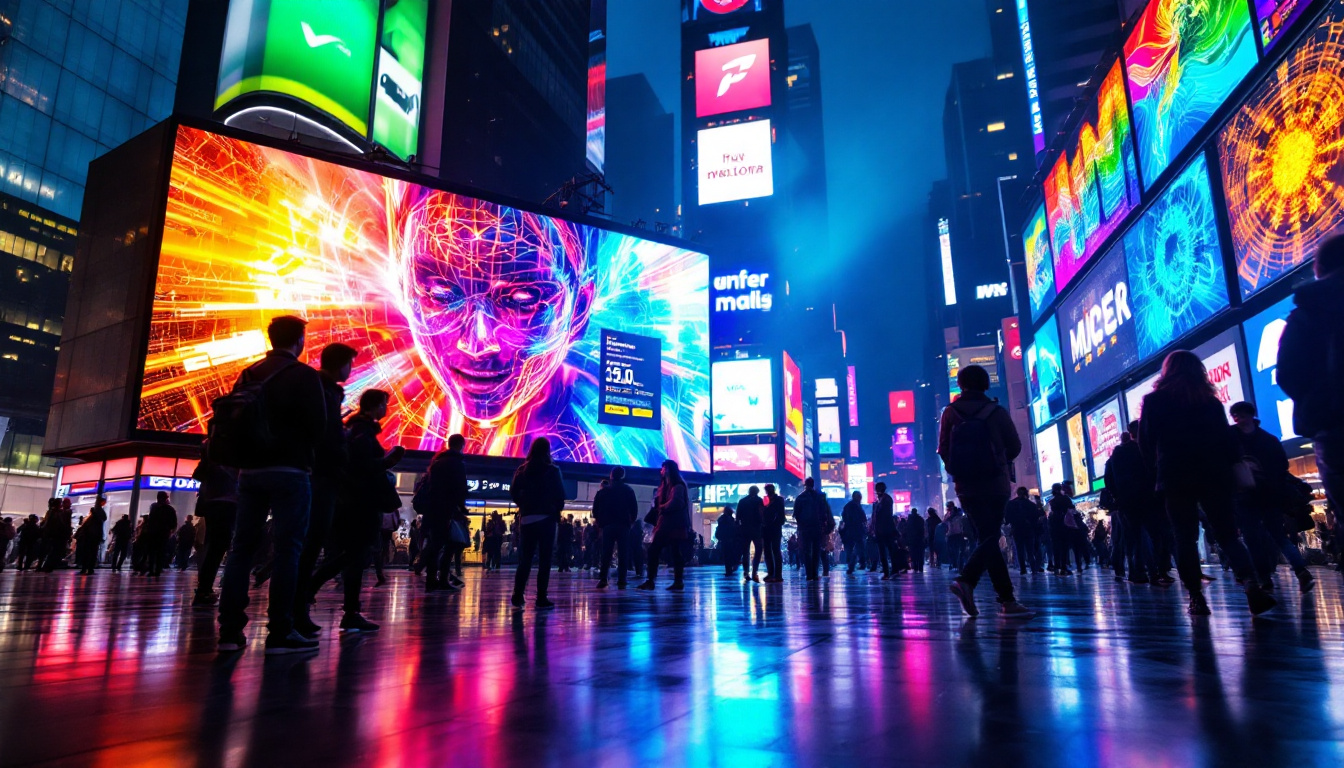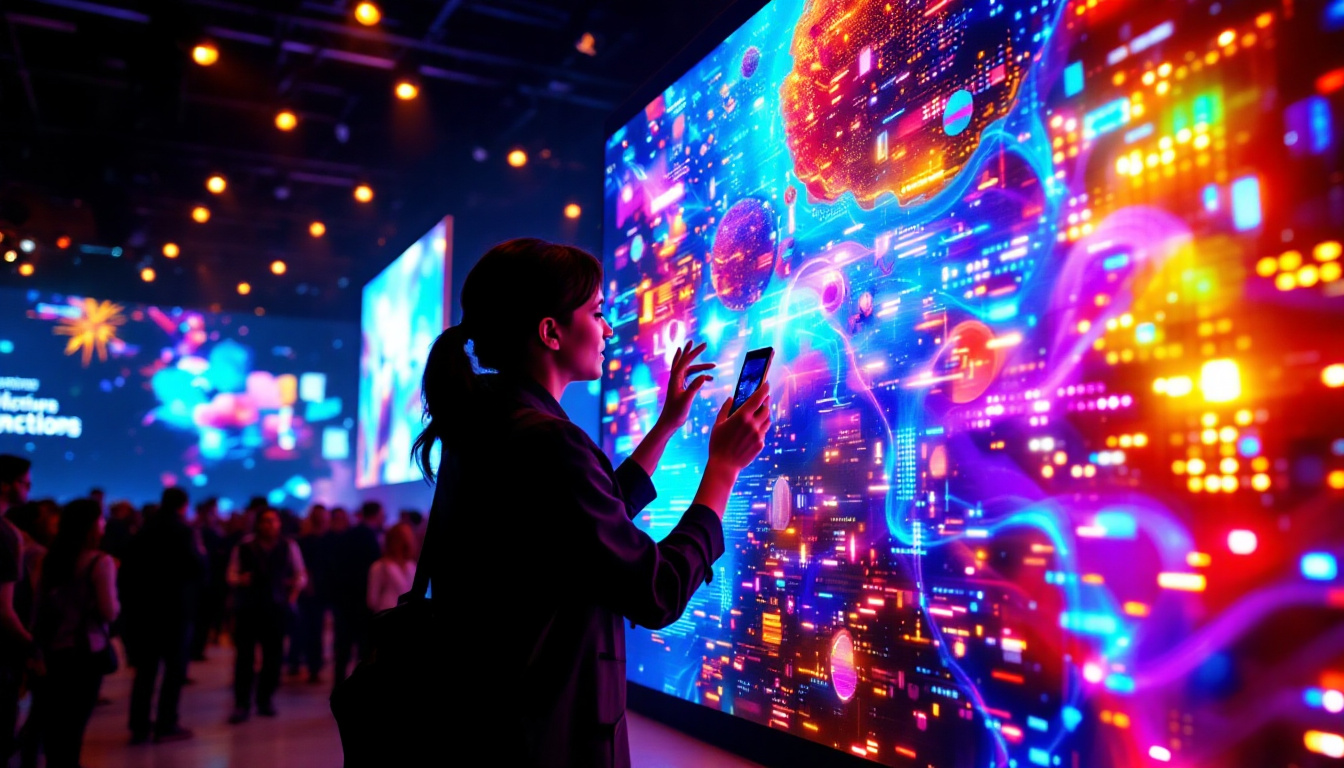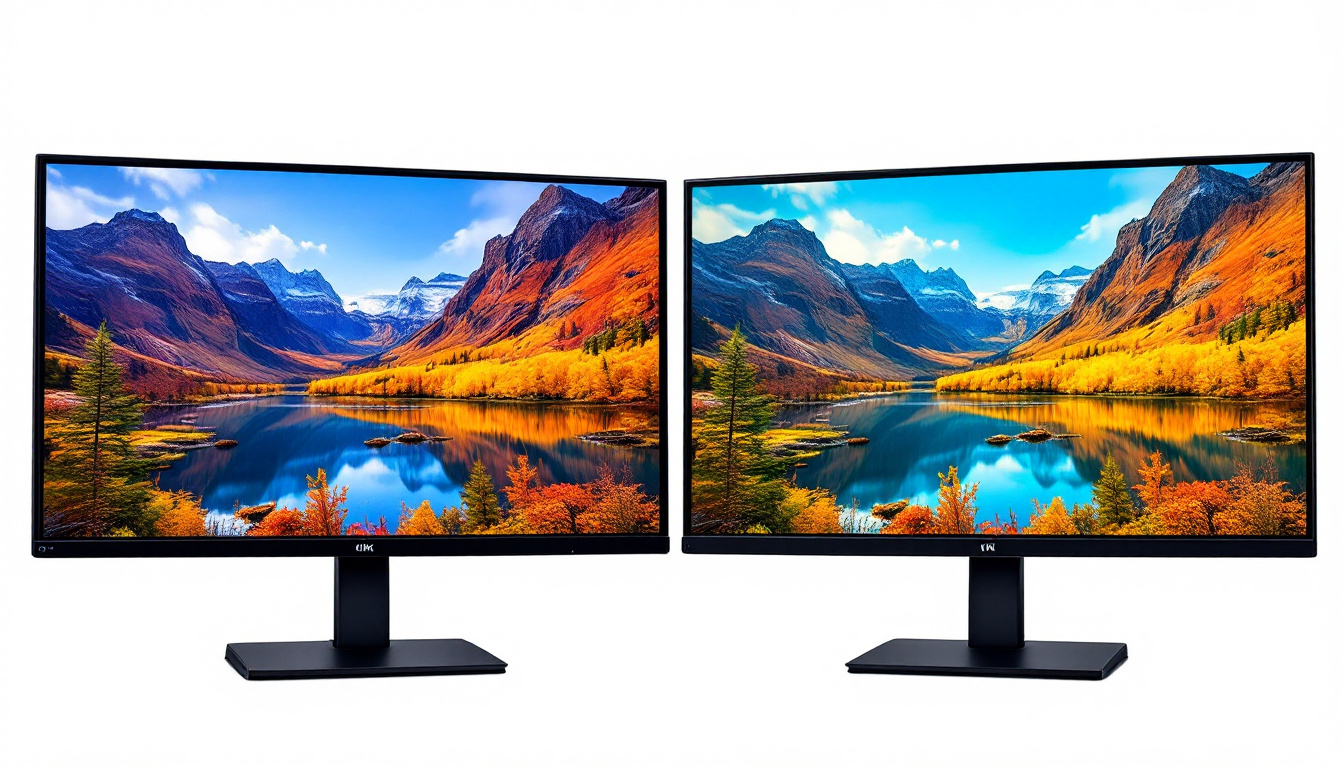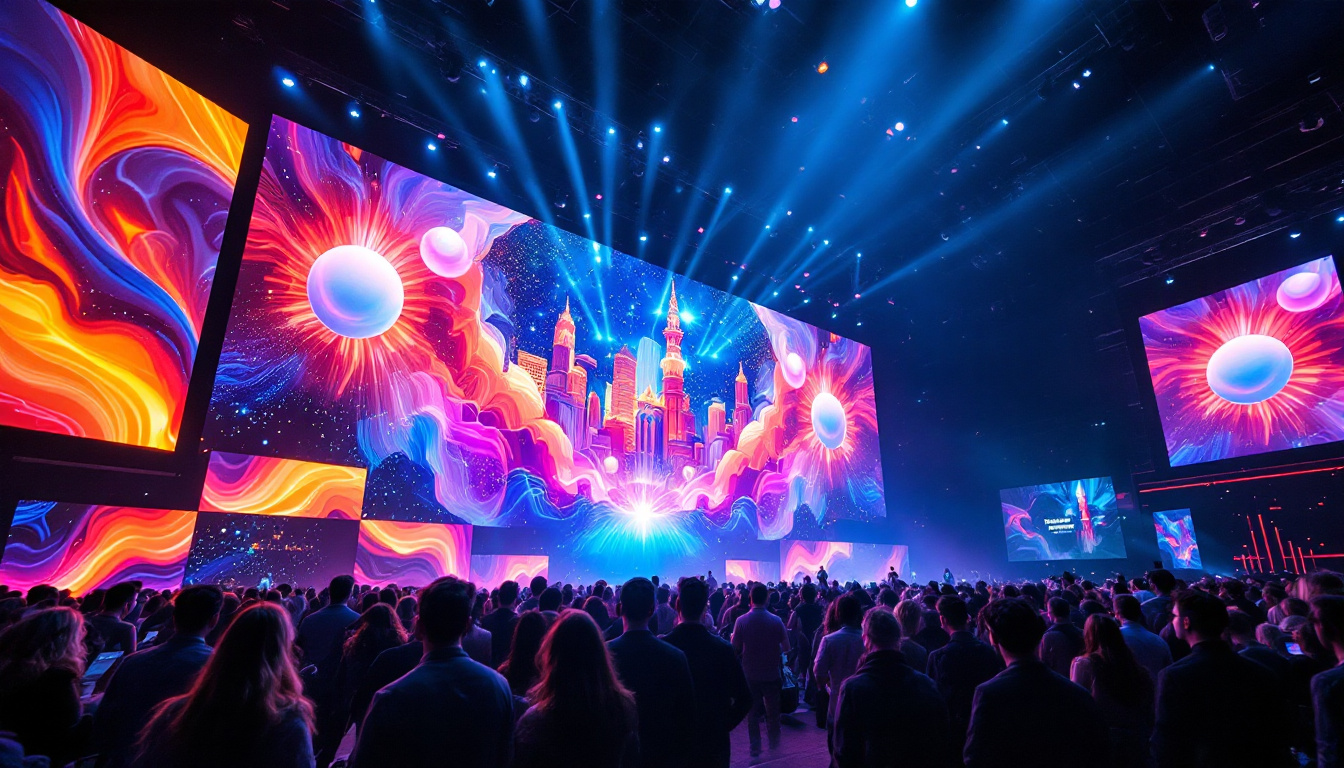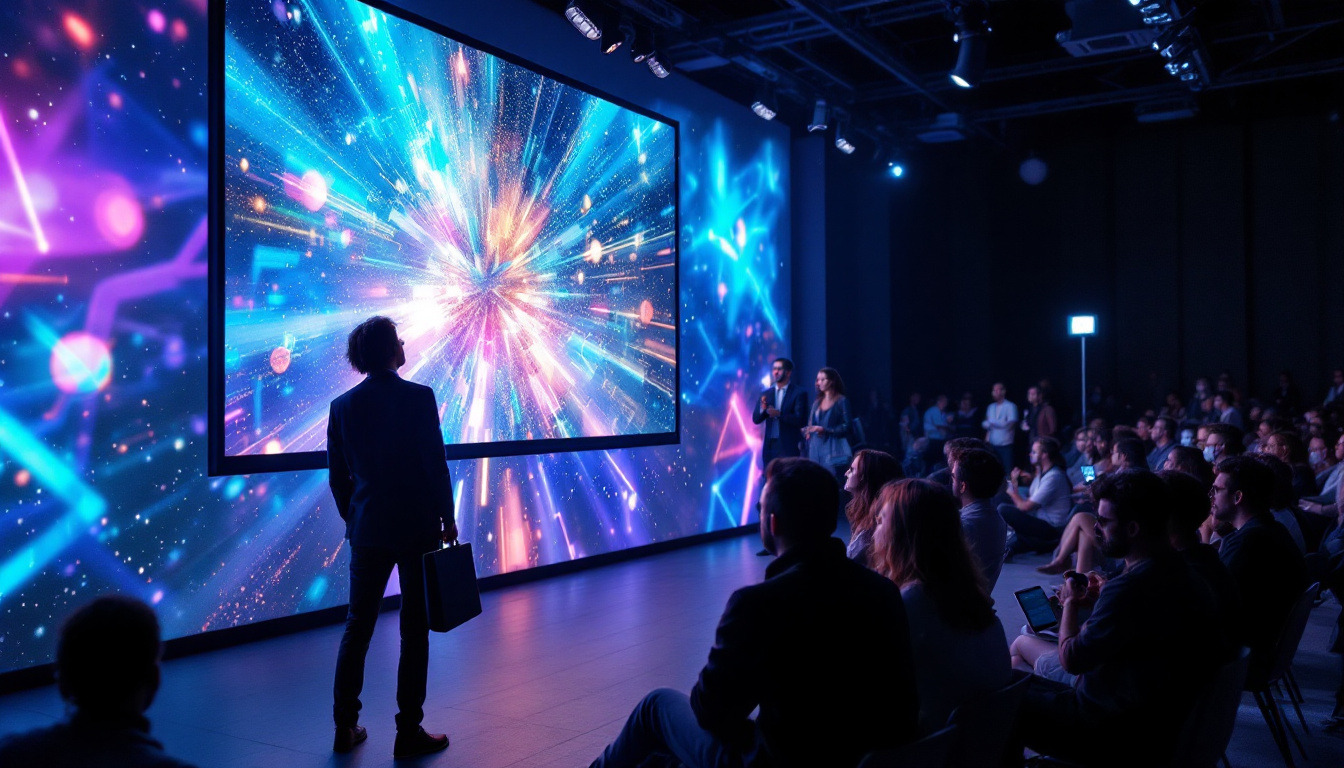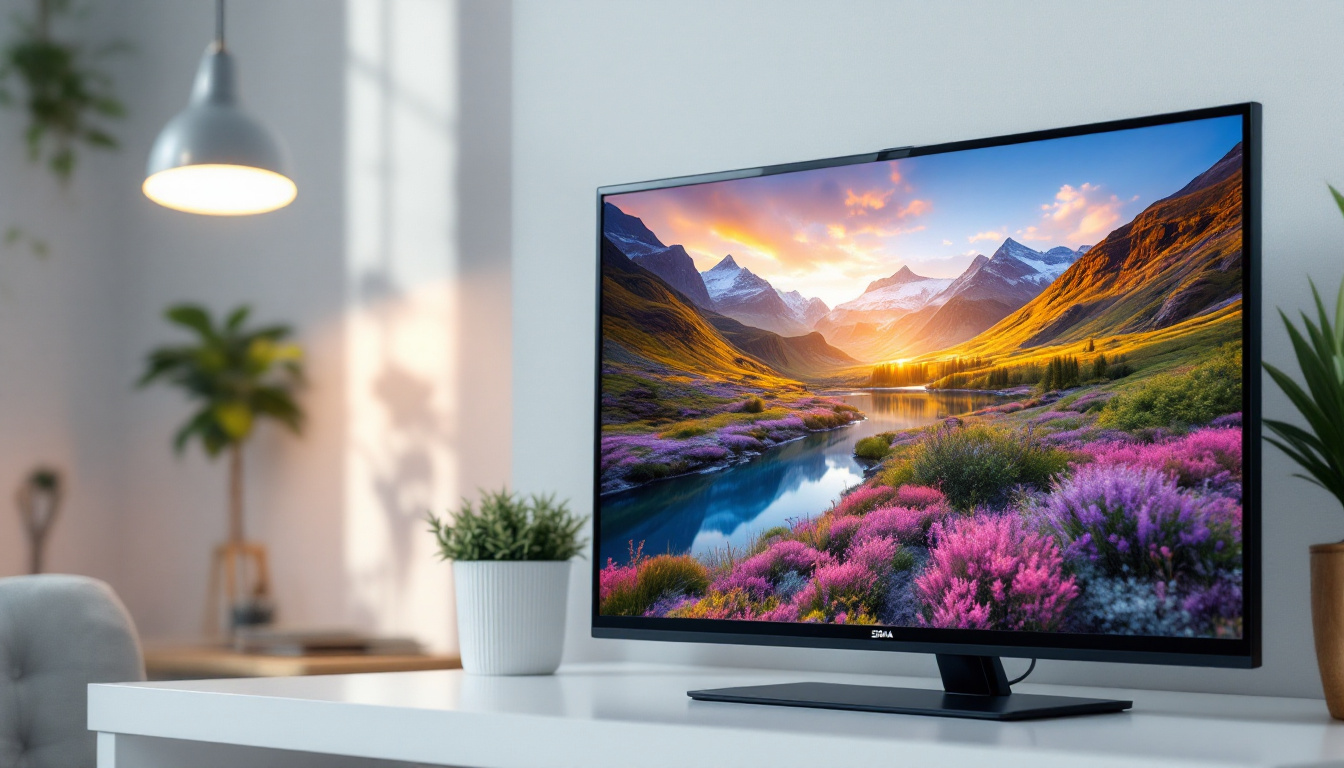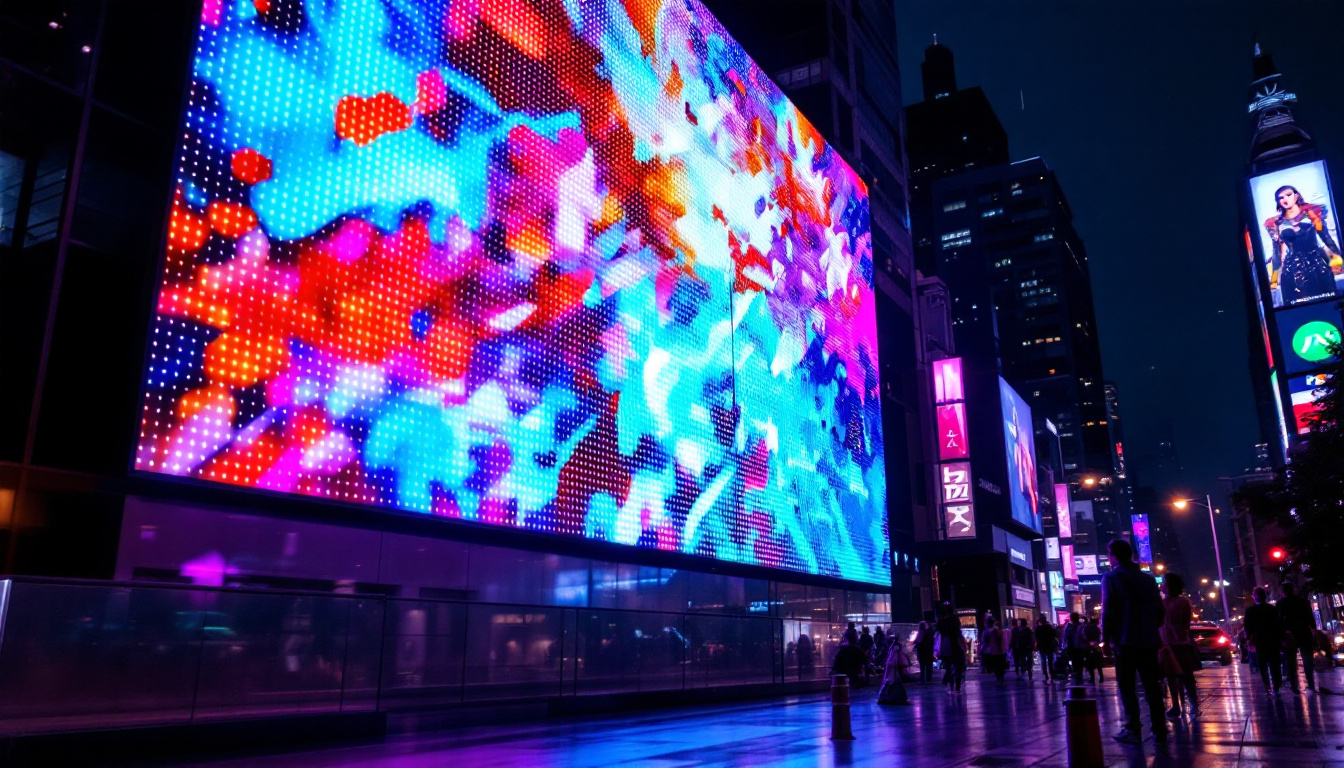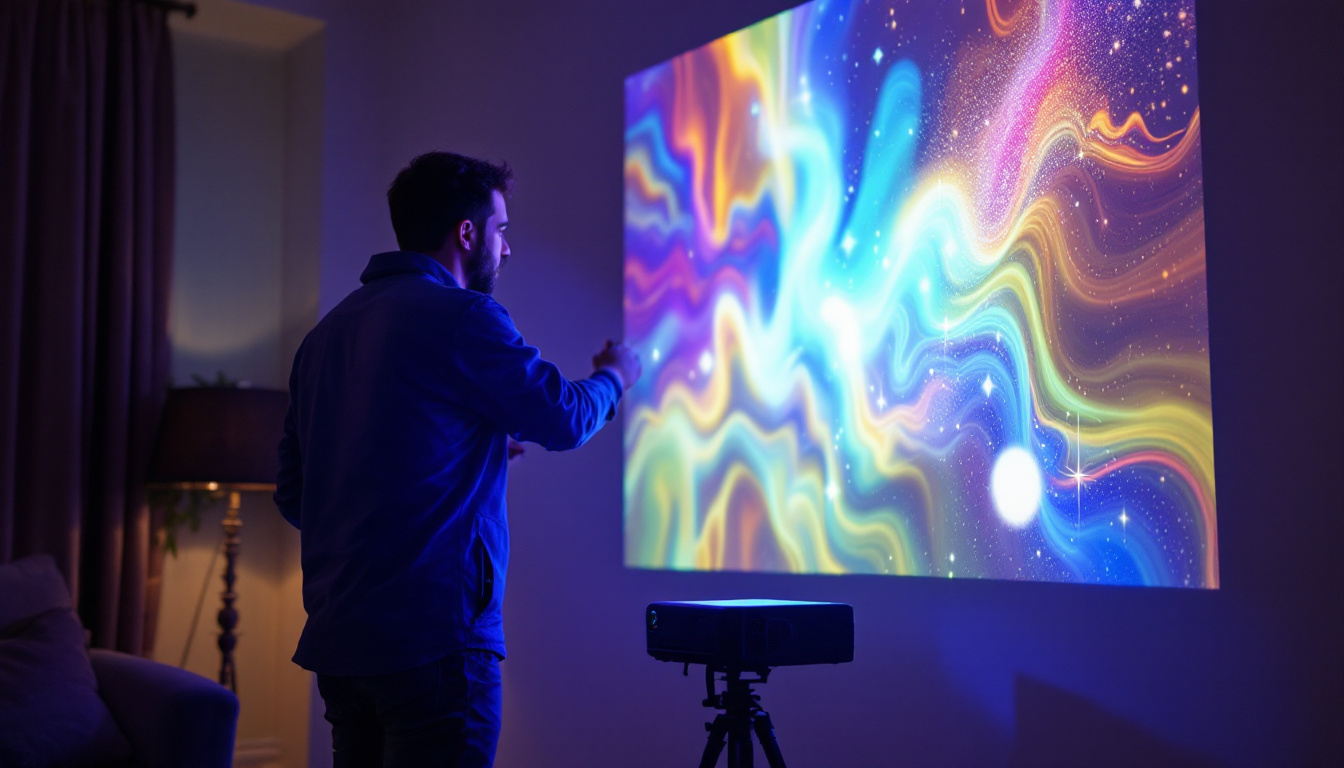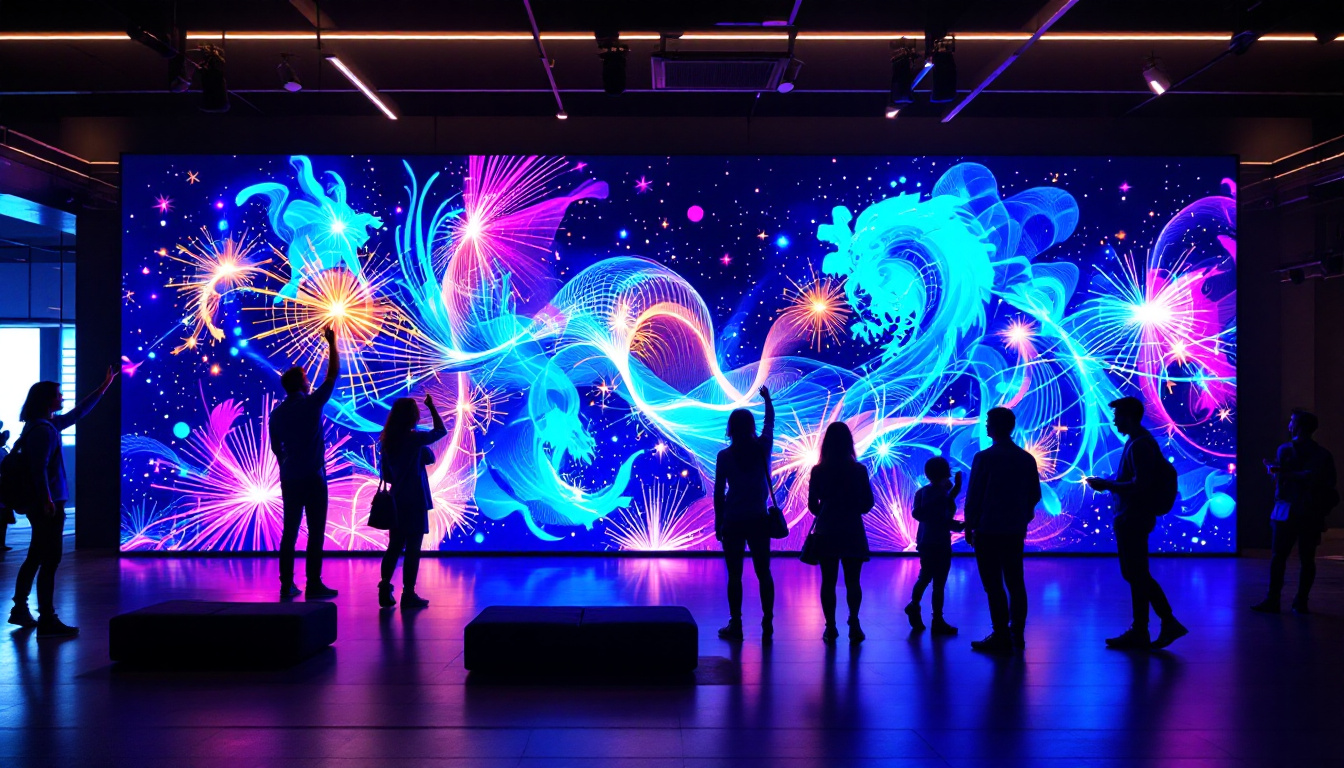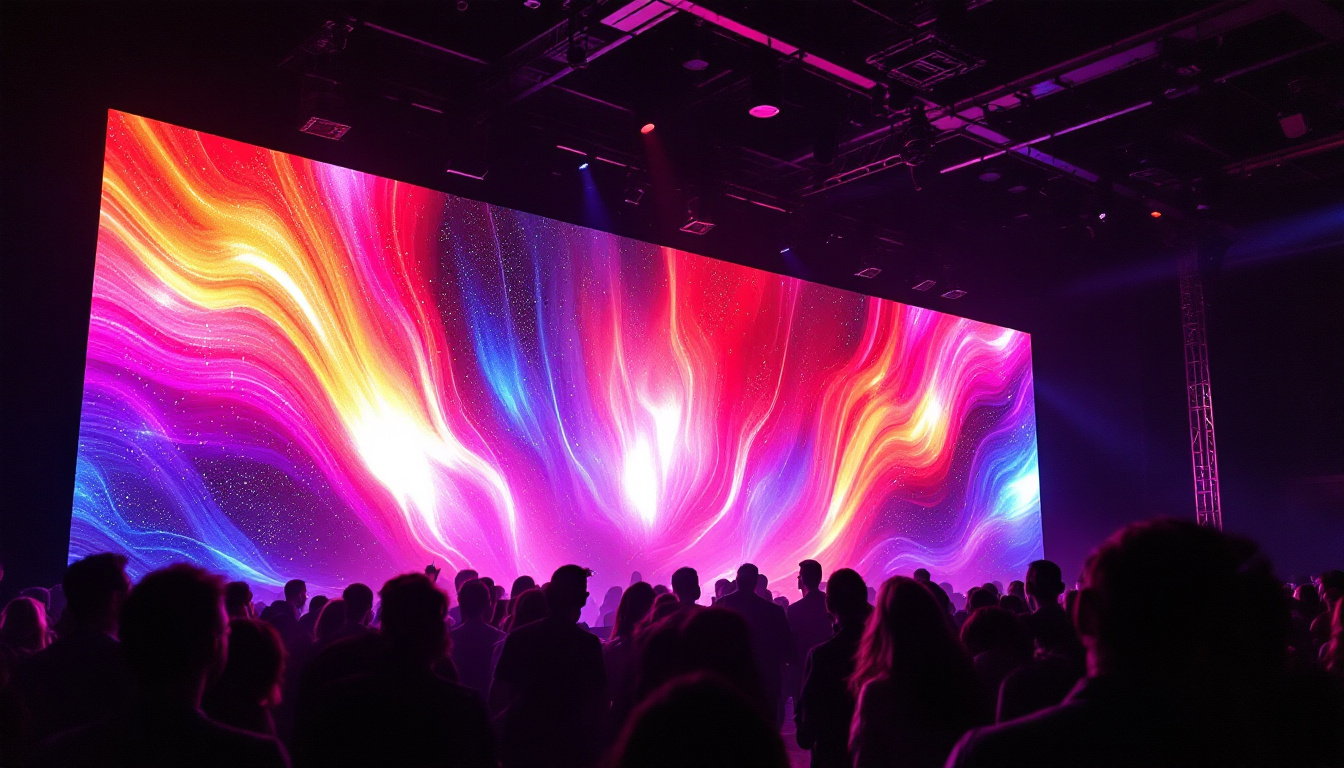In the realm of visual technology, LED displays have emerged as a leading choice for both commercial and personal use. Their vibrant colors, energy efficiency, and versatility make them a preferred option for various applications, from home theaters to large-scale advertising. This article delves into the intricacies of LED displays, examining their technology, advantages, and how they compare to traditional projectors.
Understanding LED Technology
LED, or Light Emitting Diode, technology has revolutionized the way images are displayed. Unlike traditional projection methods that rely on bulbs and lenses, LED displays utilize an array of tiny diodes to emit light directly. This fundamental difference in technology leads to a variety of benefits that are worth exploring.
How LED Displays Work
At the core of an LED display are thousands of individual diodes that create light when an electric current passes through them. These diodes are grouped into pixels, which can be manipulated to produce a wide range of colors and brightness levels. The combination of red, green, and blue diodes in each pixel allows for the creation of millions of color variations, resulting in stunning visuals.
LED displays can be either direct view or backlit. Direct view displays are made up of individual LED modules that form the screen, while backlit displays use LEDs to illuminate a liquid crystal display (LCD) panel. Each type has its own set of advantages, making them suitable for different applications. For instance, direct view LED displays are often preferred for large-scale outdoor advertising due to their exceptional brightness and clarity, while backlit displays are commonly found in consumer electronics like televisions and computer monitors, where color accuracy and contrast are paramount.
Types of LED Displays
LED displays come in various forms, catering to different needs and environments. The most common types include:
- Indoor LED Displays: These are typically used in settings like shopping malls, conference rooms, and theaters. They are designed for close viewing and offer high resolution and brightness.
- Outdoor LED Displays: Built to withstand the elements, outdoor displays are brighter and more robust. They are often used for billboards and stadiums, where visibility from a distance is crucial.
- Transparent LED Displays: A newer innovation, these displays allow for visibility through the screen while still showing images. They are often used in retail environments to create eye-catching displays without obstructing views.
In addition to these common types, there are also specialized LED displays such as flexible LED screens, which can be bent and shaped to fit unique spaces or designs. These are particularly popular in creative installations and events where traditional rigid screens would be impractical. Furthermore, advancements in technology have led to the development of microLED displays, which consist of even smaller diodes that can provide superior color accuracy and energy efficiency. This innovation is paving the way for the next generation of displays, promising even more immersive experiences.
Moreover, the integration of smart technology with LED displays has transformed how content is managed and delivered. With the rise of digital signage, businesses can now update their displays in real-time, tailoring messages to specific audiences or events. This capability not only enhances marketing strategies but also improves engagement by allowing for dynamic content that can respond to changing conditions or viewer preferences. As LED technology continues to evolve, we can expect to see even more innovative applications that push the boundaries of visual communication.
Advantages of LED Displays
LED displays offer numerous advantages over traditional projection systems. Understanding these benefits can help consumers and businesses make informed decisions about their display technology.
Superior Image Quality
One of the most notable advantages of LED displays is their superior image quality. The vibrant colors and high contrast ratios make images appear more lifelike and engaging. Additionally, LED displays maintain their brightness and clarity even in well-lit environments, making them ideal for both indoor and outdoor use. The pixel density in LED displays allows for sharper images, which is particularly beneficial in settings such as retail environments or presentations where detail is crucial. Furthermore, advancements in technology have led to the development of high dynamic range (HDR) capabilities in LED displays, enhancing the viewing experience by providing a broader spectrum of colors and improved depth perception.
Energy Efficiency
Energy consumption is a significant consideration for many businesses and consumers. LED displays are known for their energy efficiency, consuming less power than traditional projectors. This not only reduces electricity costs but also contributes to a lower carbon footprint, making LED displays a more environmentally friendly option. The reduced energy consumption also means that LED displays generate less heat, which can lead to lower air conditioning costs in commercial spaces. Additionally, many LED displays come equipped with smart technology that allows for automatic brightness adjustment based on ambient light, further optimizing energy usage and enhancing the overall user experience.
Longevity and Durability
LED displays are built to last. With a lifespan that can exceed 100,000 hours, they far outlast traditional projection bulbs, which typically need to be replaced every few thousand hours. This longevity translates to lower maintenance costs and less frequent replacements, making LED displays a cost-effective choice in the long run. Moreover, LED technology is inherently more robust, making these displays resistant to shock and vibration, which is particularly advantageous in high-traffic areas or during events. Their sealed construction also protects against dust and moisture, ensuring reliable performance in various environments. This durability not only enhances the display’s operational lifespan but also makes it a suitable investment for both temporary setups and permanent installations.
Comparing LED Displays and Traditional Projectors
When considering display options, it’s important to compare LED displays with traditional projectors to understand the strengths and weaknesses of each. This comparison can help users determine which technology best suits their needs.
Image Quality
While traditional projectors can deliver decent image quality, they often struggle in well-lit environments. LED displays, on the other hand, provide consistent brightness and color accuracy, making them the preferred choice for vibrant, high-quality images. Furthermore, LED displays eliminate issues such as screen glare and distortion, which can be common with projectors.
Setup and Portability
Projectors typically require a more complex setup, including mounting, alignment, and adjustment for optimal viewing angles. LED displays, especially portable models, are often easier to set up and can be used in a variety of environments without the need for extensive configuration. This convenience can be a significant advantage for presentations and events.
Cost Considerations
While the initial investment for LED displays may be higher than traditional projectors, the long-term savings associated with energy efficiency and reduced maintenance costs can offset this difference. Businesses and consumers should consider their specific needs and usage patterns when evaluating the overall cost-effectiveness of each option.
Applications of LED Displays
The versatility of LED displays allows them to be used in a wide range of applications. From entertainment to information dissemination, their adaptability makes them a valuable asset in various industries.
Entertainment and Events
In the entertainment industry, LED displays are commonly used for concerts, festivals, and live events. Their ability to produce bright, dynamic visuals enhances the audience experience, creating an immersive environment. Additionally, LED screens can be configured in various shapes and sizes, allowing for creative stage designs and presentations.
Advertising and Marketing
Businesses increasingly turn to LED displays for advertising and marketing purposes. Digital billboards and storefront displays attract attention with their vibrant colors and motion graphics. The ability to update content in real-time allows businesses to adapt their messaging quickly, ensuring they remain relevant and engaging to their target audience.
Corporate and Educational Use
In corporate settings, LED displays are utilized for presentations, video conferencing, and information sharing. Their clarity and ease of use make them ideal for collaborative environments. Similarly, educational institutions are adopting LED technology for classrooms and auditoriums, enhancing the learning experience with interactive and visually appealing content.
Future Trends in LED Display Technology
The future of LED display technology looks promising, with ongoing advancements that are set to enhance performance and functionality. Staying informed about these trends can help consumers and businesses make strategic decisions regarding their display technology.
Advancements in Resolution
As technology continues to evolve, the resolution of LED displays is expected to improve significantly. Higher pixel densities will result in even sharper images, making LED displays suitable for more applications, including virtual reality and augmented reality experiences. This trend is likely to drive demand for high-resolution displays across various sectors.
Integration with Smart Technology
With the rise of smart technology, LED displays are becoming increasingly integrated with smart systems. This integration allows for seamless connectivity with devices such as smartphones and tablets, enabling users to control content and settings remotely. Such advancements enhance user experience and open up new possibilities for interactive displays.
Environmental Considerations
As sustainability becomes a priority for many organizations, the development of eco-friendly LED displays is gaining traction. Manufacturers are focusing on reducing energy consumption and utilizing recyclable materials in their products. This trend aligns with the growing demand for environmentally responsible technology solutions.
Conclusion
LED displays have established themselves as a leading technology in the visual display market, offering numerous advantages over traditional projectors. Their superior image quality, energy efficiency, and versatility make them suitable for a wide range of applications, from entertainment to corporate use. As technology continues to advance, LED displays will likely become even more integral to our daily lives.
For businesses and consumers considering a new display solution, understanding the benefits and applications of LED technology is essential. With the right choice, users can enhance their visual experiences while enjoying the long-term advantages that LED displays provide.
Discover LumenMatrix’s Innovative LED Solutions
Ready to elevate your visual experience with the latest in LED technology? Look no further than LumenMatrix, a pioneer in crafting cutting-edge LED displays that bring your content to life. Whether you’re in need of an Indoor LED Wall Display for your corporate events, an Outdoor LED Wall Display for impactful advertising, or any of our specialized solutions like Vehicle LED Displays, LED Sports Displays, or Custom LED Displays, LumenMatrix has the perfect solution to meet your needs. Embrace the future of visual communication and check out LumenMatrix LED Display Solutions today to see how we can help you make a lasting impression.


